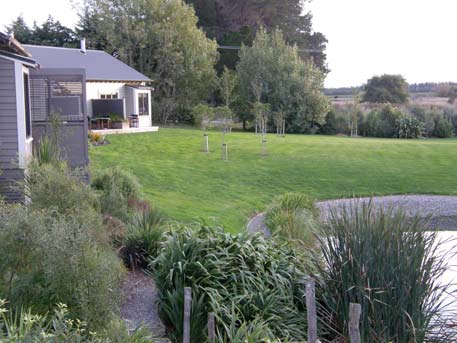Martinborough
Central Otago has received much of the press in recent years, but many wine cognoscenti believe that the
Martinborough subregion of the Waiparapa shows the most potential in New Zealand for delivering Burgundian
character in Pinot Noir. Waiparapa, or ‘The Land of Glistening Waters’, was reputedly named by Kupe, the
Maori navigator that is said to have discovered New Zealand. A pastoral area spotted with boggy swamps,
Waiparapa consists of a long valley of ancient gravels carved out by rivers that ages ago flowed from the
Tasman Sea. It is the driest region of the North Island.
Modern viticulture originated thirty years ago in Martinborough, when the area consisted of a small Victorian
town laid out in the pattern of the Union Jack and miles of surrounding barren land. Hardly anyone had any
interest in the region known for its cold winds and daunting frosts and most thought it was only suitable for
sheep grazing. Today, it shows a remarkable renaissance with 39,000 acres of vines, 38 wineries, gourmet
restaurants, art galleries, and numerous boutique lodgings. The restored historic Martinborough Hotel (Est.
1882) now anchors proudly this quaint town. Martinborough is a fifty minute tortuous drive over the steep and
scenically dramatic Rimutaka Hill from Wellington, the capital of New Zealand. The drive does not deter
Wellington residents who flock to Martinborough on weekends to take in the wine related activities making
Martinborough the only “wine town” in New Zealand. Toast Martinborough, which began in 1992, is the most
popular wine and food festival in the country.
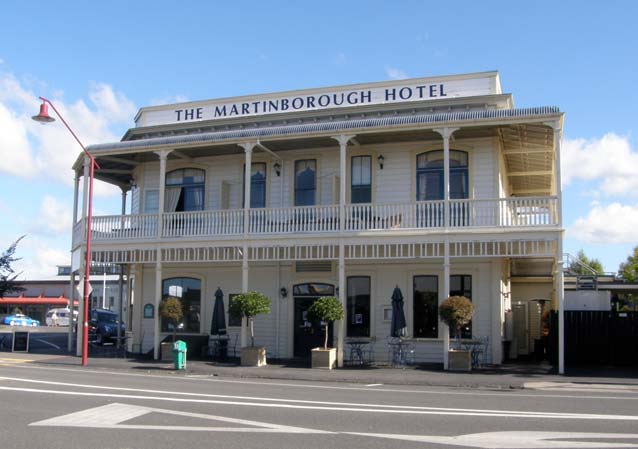
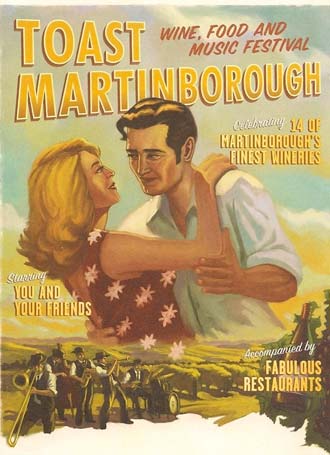
The first vineyards were planted in Martinborough in 1978 by Alistair Taylor at about the same time that a report
by Derek Milne was published which identified the stony terraces around town as ideal for viticulture. By the
early 1980s, the area had five mainstay wineries, Ata Rangi, Te Kairanga, Chifney, Dry River and
Martinborough Vineyard. The second wave arrived in the late 1980s including Palliser Estate, and the third
wave followed in the 1990s with the arrival of Escarpment and the Craggy Range Vineyards at Te Muna.
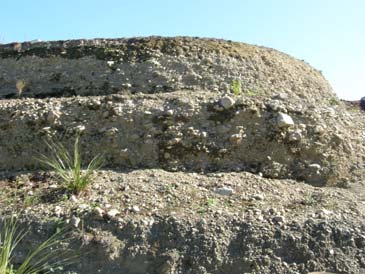
Martinborough’s alluvial river terraces of deep, free-draining gravel
overlaid with gravely silt loam are ideal for growing Pinot Noir. A cross sectional
photo at Escarpment reveals the typical soil profile. The
climate is conducive as well, with low rainfall, warm, dry summers and a
long, reliably dry autumn. The weather can be unpredictable, however,
with a significant threat of frost and bad weather always looming early in
the growing season. The cool evenings during the growing season allow
the grapes to retain acidity, although acid is often added during
winemaking. Combined with low yields and a focus on quality, the region
has received international recognition for producing top quality Pinot
Noir and other varieties such as Chardonnay, Riesling and Sauvignon
Blanc. Vineyard plantings have spread beyond Martinborough into the
other two subregions of the Waiparara, Gladstone and Masterton.
Phylloxera is found in many wine growing areas in New Zealand, and last year it was discovered in the
Wairarapa wine region. According to the Dominion Post, the mite had infested 61 acres of ungrafted
grapevines at Matahiwi Estate in Masterton. 24 percent of the vines in the Wairarapa are on ungrafted
rootstock so the threat of spread is serious. It was not known how the insect was spread to the region but
probably through plant material or soil brought in on vehicles from affected regions. Most vineyards that do not
have resistant vines are planning to replant over the next 10 to 15 years. Strict adherence to rules restricting
movement of vineyard machinery and plant material has been instituted (see photo at Dry River below).
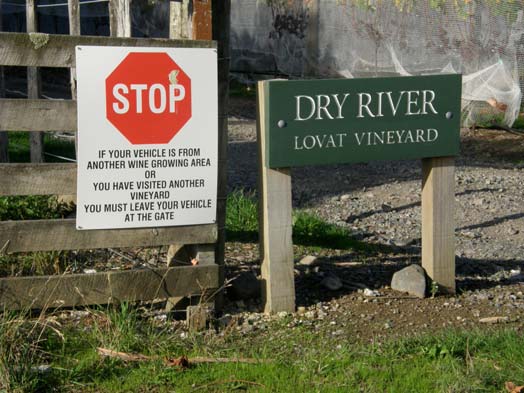
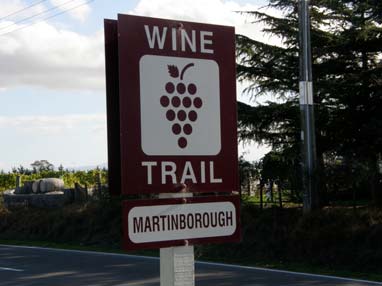
Visiting wineries in Martinborough harks back to a simpler and less
hurried time that we have long forgotten in California. The wineries are
unpretentious and very modest, offering a friendly reception to all
visitors. The tasting rooms (called Cellar Doors in New Zealand), are
simply outfitted and do not offer hats and t-shirts and other wine
paraphernalia. A number of wineries have restaurants and some even
offer accommodations. Martinborough is particularly suitable for
visitors, with twenty wineries within walking distance of each other.
When I visited, there were no cars on the roads to speak of and very
few Cellar Door tasters. As my wife and I meandered along the grassy
embankments of the two-lane roads exploring the region, we were
shocked when a cheerful woman stopped, got out of her car (she was
barefoot by the way) and asked us if we needed directions or a lift.
This would never happen in California wine country.
If you decide at some time in the future to visit Martinborough, I can highly recommend you hunker down at
Parehua, which offers surprisingly modern luxury accommodations and beautifully landscaping within a short
walking distance of the town of Martinborough and the surrounding wineries
For more reading on the Waiparara, consult the excellent book A Toast to Martinborough and the Wairarapa
written by noted New Zealand wine writer, Dave Cull (published in 2003 by Longacre Press, New Zealand,
$36.99). For information on the Waiparara, consult the following websites: www.wairarapa.co.nz,
www.wairarapanz.com, and www.martinboroughnz.com.









